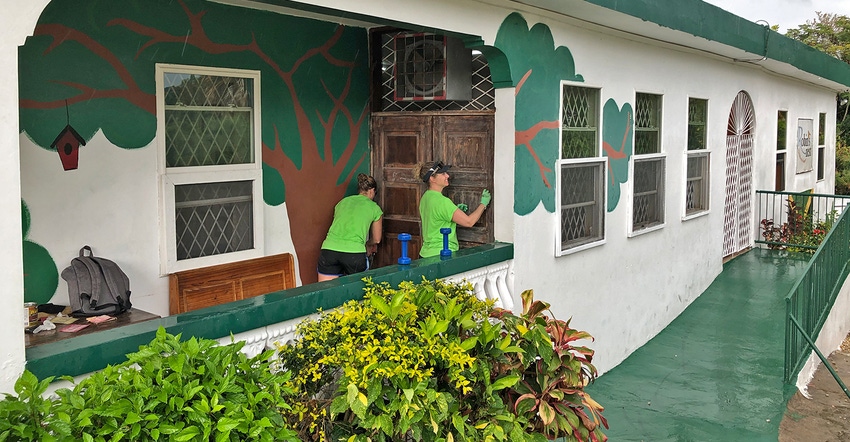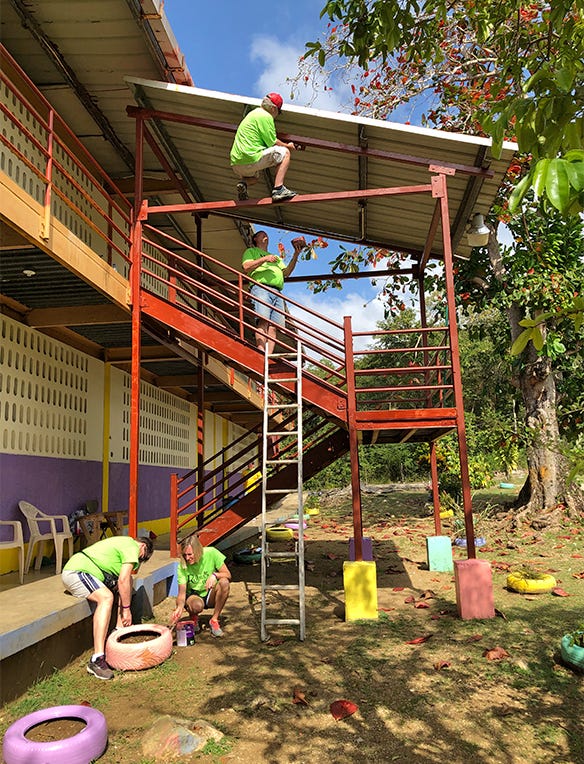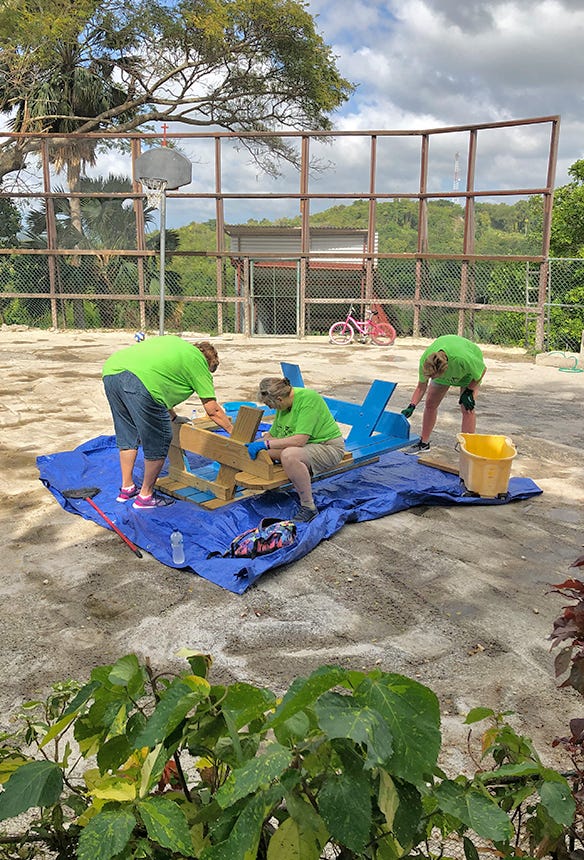April 2, 2019

Incentive trips have probably been part of agriculture as long as there have been seed caps. But those trips are changing in new ways. LG Seeds, the AgReliant brand, holds an annual incentive trip to a warm destination. For 2019, more than 350 employees, dealers and customers boarded planes for Montego Bay, Jamaica, for some welcome fun in the sun. But there’s more to it than that.
Andy Montgomery, LG Seeds brand manager, explains that in the past four years, a new wrinkle has been added to the trip. “In the last few years, people on these trips kind of want more,” he says. “They know they have a good way of life — but they travel to these beautiful places in Third World countries, and they see poverty. They want to invest back into the community.”
Montgomery says the participation in these trips, which always include education time before afternoon swims and other activities, is expanding. And in 2019, LG Seeds saw it expand in a big way. Not only did participants put some sweat equity into a few projects, but they also reached into their wallets to help, too.

UP HIGH: Attendees of the annual incentive trip for LG Seeds got a chance to put a range of their skills to work in Jamaica. From the top are Gail Edlefson and Tyler Barlage. At the base of the stairs are Vicki VanderLinden (right) and Lori Adams.

Craftspeople at work
Montgomery points out that those who traveled on the company trip included many people with a wide range of skills. “They have wonderful talents, they’re craftsmen,” he says. “Most people in agriculture have a talent other than farming. They’re willing to give that away.”
Working with local contacts, the company arranged to put some participants to work. They would travel to an orphanage to do work around the facility, including fixing infrastructure and painting. “We did a lot of painting,” Montgomery says.
The company did face one challenge: Montgomery explains that with 350 people as part of the trip, it would be impossible to include them all. There was room for 70 people to leave the resort and go into town for the work. They maxed out the number of volunteers available.
“We broke the group into three teams,” Montgomery says. “The biggest group went to Robin’s Nest, which is an orphanage with all kinds of projects, from fence repair to painting. We even had some craftsmen helping with tile in some rooms.”
Another group went to Green Heights Church, where there was heavy lifting to be done. Most construction in that part of the world is concrete block. The church is associated with the orphanage. “They don’t have fork trucks there, so the block was left by the side of the road and had to be moved to all the stations where it could be used,” he says.
And the third project was Salter’s Hill School, a community school. There was more painting, some wall repair and even some electrical work there. “We had a few electricians in our group that helped install new fluorescent lights,” Montgomery adds
 .
.
PAINTING IS IMPORTANT: This is just one example of the many painting projects carried out by 70 LG Seeds volunteers who ventured into Montego Bay, Jamaica, to work on projects at three locations. From left are Debbie Bitner, Marie Barks and Debra O’Connor.

Monetary support
While the work, which was more than a half-day of “sweat equity” for those three projects, helped the locations with several projects, the group wasn’t done.
“We held an auction on the last day of our trip,” Montgomery says. “We had several items to sell from the island. We had the goal of raising $18,500.” The group did a little better than that.
Conducted by Kam Hartstack, an auctioneer and owner of Hartstack Auction Group, the event opened with voluntary donations. Hartstack started bidding at $1,000, and several folks on hand raised their bidding numbers. Then there was another move.
“The level went down to $100 per bid, and people started to give more money,” Montgomery says. “When the auction ball got going, we ended up raising $31,320 that night.” And that money targets some key projects at the Robin’s Nest orphanage, including a new septic tank, a water filtration system and dirt.
“We had agronomists look at the garden for the orphanage,” Montgomery says. “They figured if you could dig out the bad dirt that was there and replace it, you’d have something. The cost of topsoil on the island is high.”
Michele Hein, former Robin’s Nest board president, commented in a statement about the work that the donations and monetary support “will allow Robin’s Nest to attend to much needed projects. We recently celebrated the 20th anniversary of Robin’s Nest. We have cared for hundreds of children during the past 20 years. … We hope to celebrate another 20 years.”
Adds Montgomery: “We walked away knowing that we left a bit of the Midwest in Montego Bay.”
For information about Robin’s Nest, visit robinsnestchildrenshome.org.
About the Author(s)
You May Also Like






